Abstract
ABSTRACT The concentrations of lead in the phalanges and in the blood were determined in 22 subjects who had formerly been exposed to lead in a storage battery plant, which had been closed for seven years. The bone lead concentration was measured in vivo using an ϰ-ray fluorescence technique in which two 57Co γ-ray sources were used for generating the characteristic ϰ-rays of lead, which were measured with a Ge(Li) detector. In three subjects the variation of the lead concentration along the fore finger was measured together with the lead concentration in the tibia. The measured lead concentrations in the phalanges were between 20 μg/g (our detection limit) and 118 μg/g. The lead concentration in the phalanges was found to increase with the length of employment, but no simple relation was found between the lead concentrations in the blood and in the phalanges. The decrease in the blood lead concentration after the cessation of exposure was followed in four subjects. Seven years after exposure had ended, the blood lead concentration was found to be more dependent on the daily intake of lead than on the release of lead from the skeleton. These experimental results could be explained by a two-compartment model using exchange rates given in publications. This model has also been used to calculate the blood lead concentration that could be achieved after a sudden release of lead from the skeleton.
Full text
PDF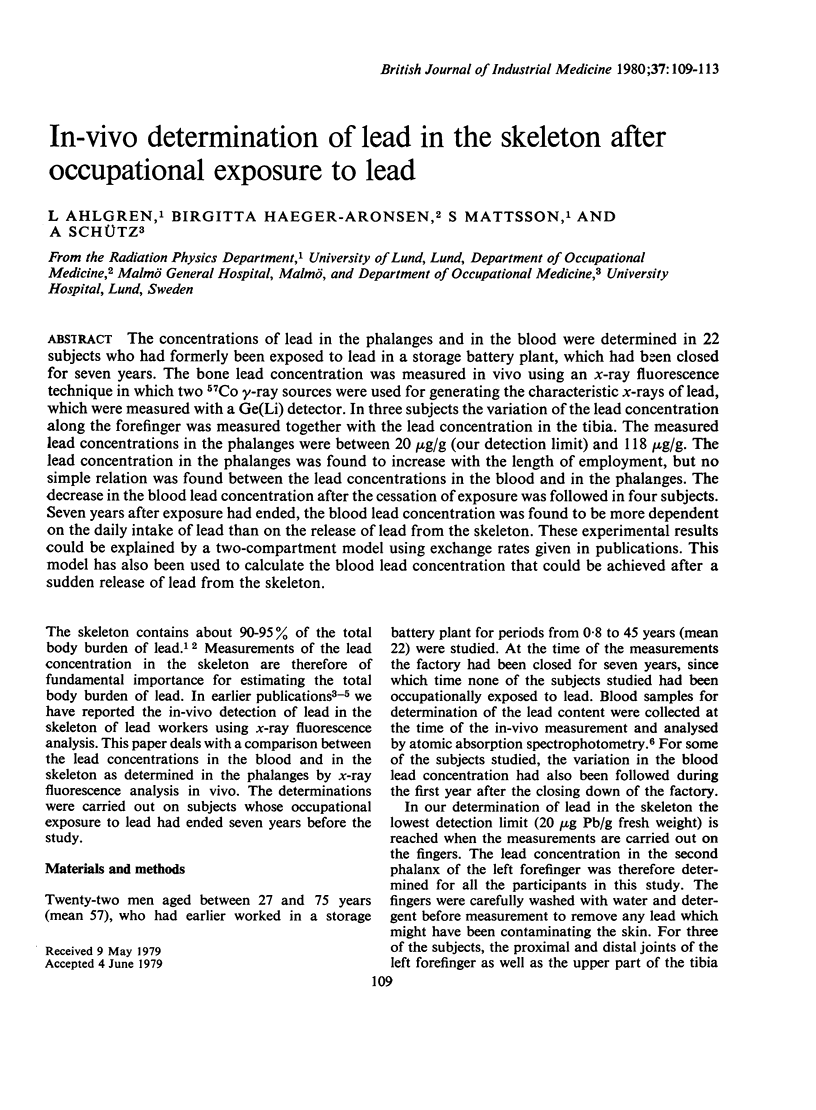
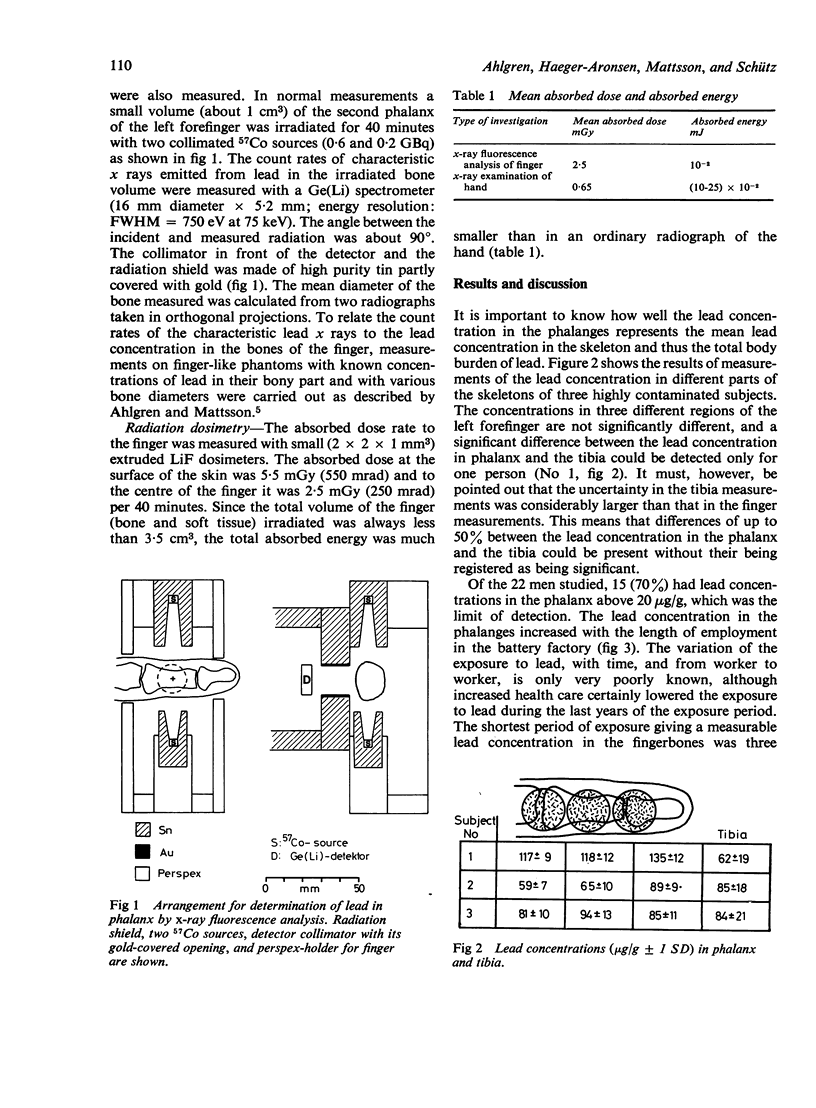
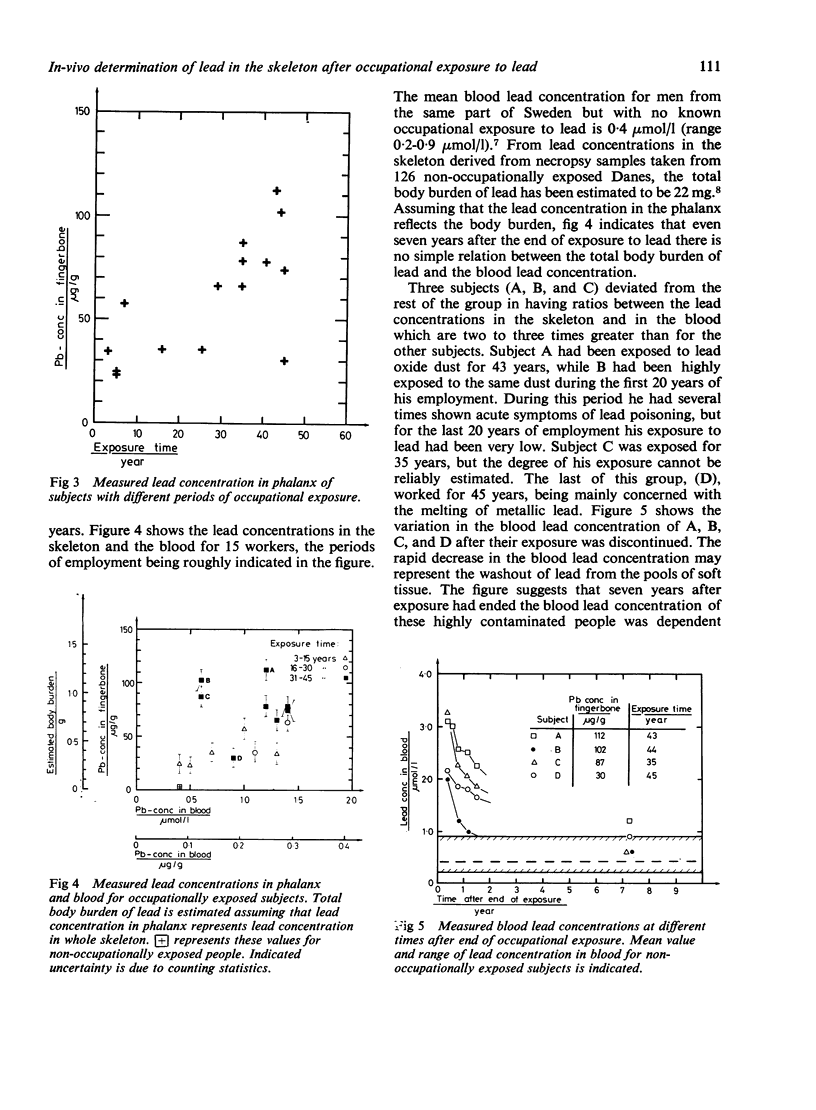
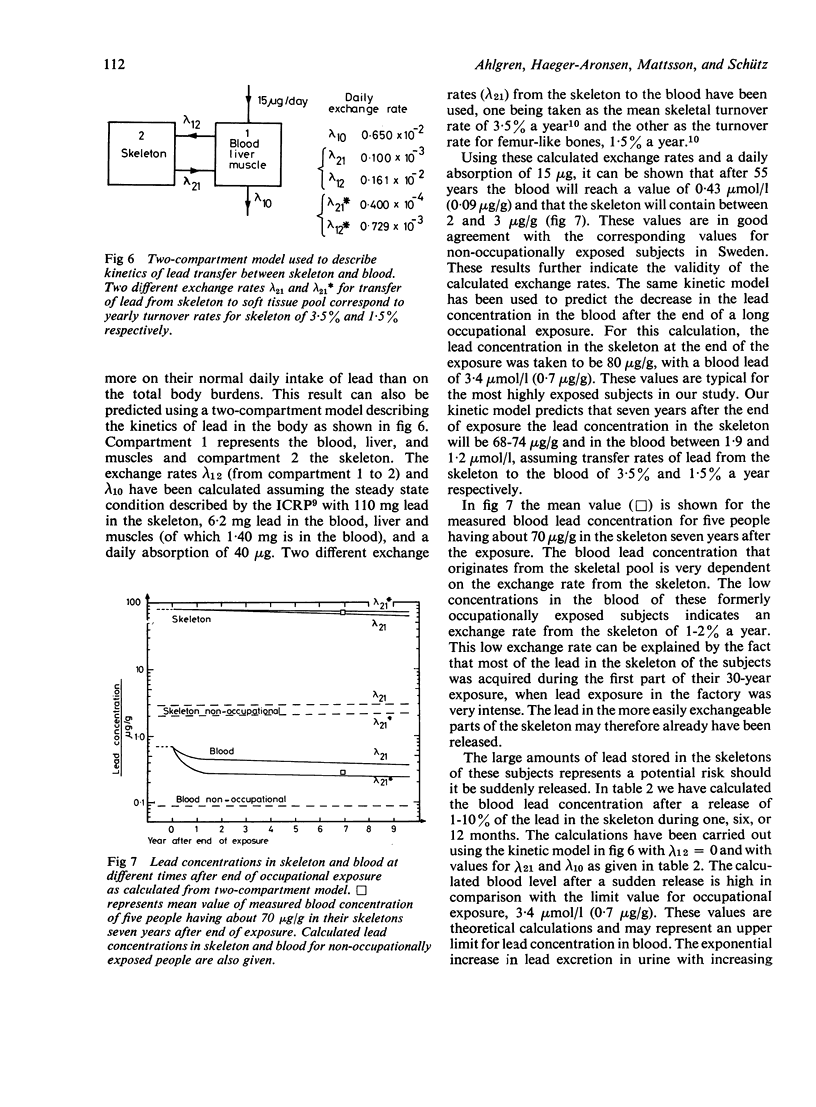
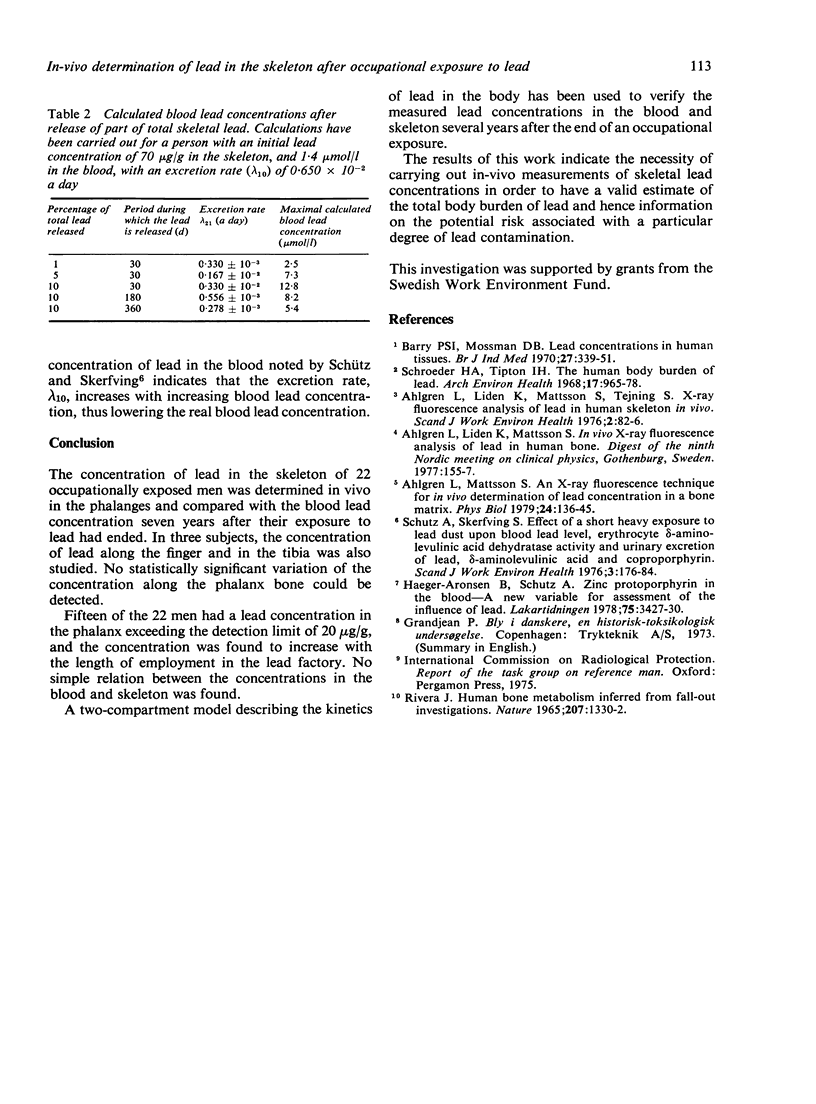
Selected References
These references are in PubMed. This may not be the complete list of references from this article.
- Ahlgren L., Lidén K., Mattsson S., Tejning S. X-ray fluorescence analysis of lead in human skeleton in vivo. Scand J Work Environ Health. 1976 Jun;2(2):82–86. doi: 10.5271/sjweh.2815. [DOI] [PubMed] [Google Scholar]
- Ahlgren L., Mattsson S. An X-ray fluorescence technique for in vivo determination of lead concentration in a bone matrix. Phys Med Biol. 1979 Jan;24(1):136–145. doi: 10.1088/0031-9155/24/1/011. [DOI] [PubMed] [Google Scholar]
- Barry P. S., Mossman D. B. Lead concentrations in human tissues. Br J Ind Med. 1970 Oct;27(4):339–351. doi: 10.1136/oem.27.4.339. [DOI] [PMC free article] [PubMed] [Google Scholar]
- Haeger-Aronsen B., Schütz A. Zinkprotoporfyrin i blod--en ny metod för bedömning av blypåverkan. Lakartidningen. 1978 Sep 27;75(39):3427–3430. [PubMed] [Google Scholar]
- Rivera J. Human bone metabolism inferred from fall-out investigations. Nature. 1965 Sep 25;207(5004):1330–1332. doi: 10.1038/2071330a0. [DOI] [PubMed] [Google Scholar]
- Schroeder H. A., Tipton I. H. The human body burden of lead. Arch Environ Health. 1968 Dec;17(6):965–978. doi: 10.1080/00039896.1968.10665354. [DOI] [PubMed] [Google Scholar]
- Schütz A., Skerfving S. Effect of a short, heavy exposure to lead dust upon blood lead level, erythrocyte delta-aminolevulinic acid dehydratase activity and urinary excretion of lead delta-aminolevulinic acid coproporphyrin. Results of a 6-month follow-up of two male subjects. Scand J Work Environ Health. 1976 Sep;2(3):176–184. doi: 10.5271/sjweh.2812. [DOI] [PubMed] [Google Scholar]


